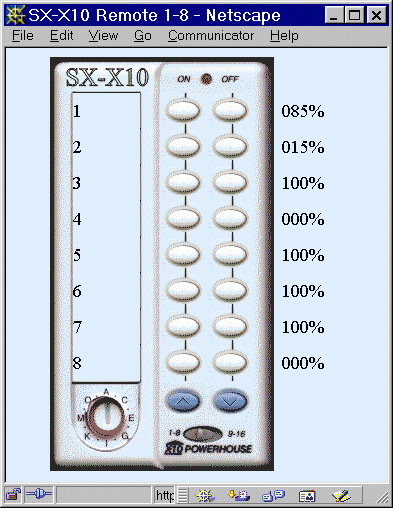
The SX-X10 is an Embedded Ethernet device which allows you to control X10 Home Automation devices over the Internet.SX-X10 uses Ubicom's Ethernet SX-Stack evaluation board, a custom serial interface cable, and custom software to control a wireless X10 "Firecracker" CM17A Control Module from any Web browser.
This SX-X10 was selected as the WINNER of SX-List's 2001 Fast Embedded Ethernet Design Challenge and Contest.
Many thanks go out SXList.com and Ubicom for making this contest possible, and for giving me the opportunity to learn more about the SX processor's "Embedded Internet" capabilities.